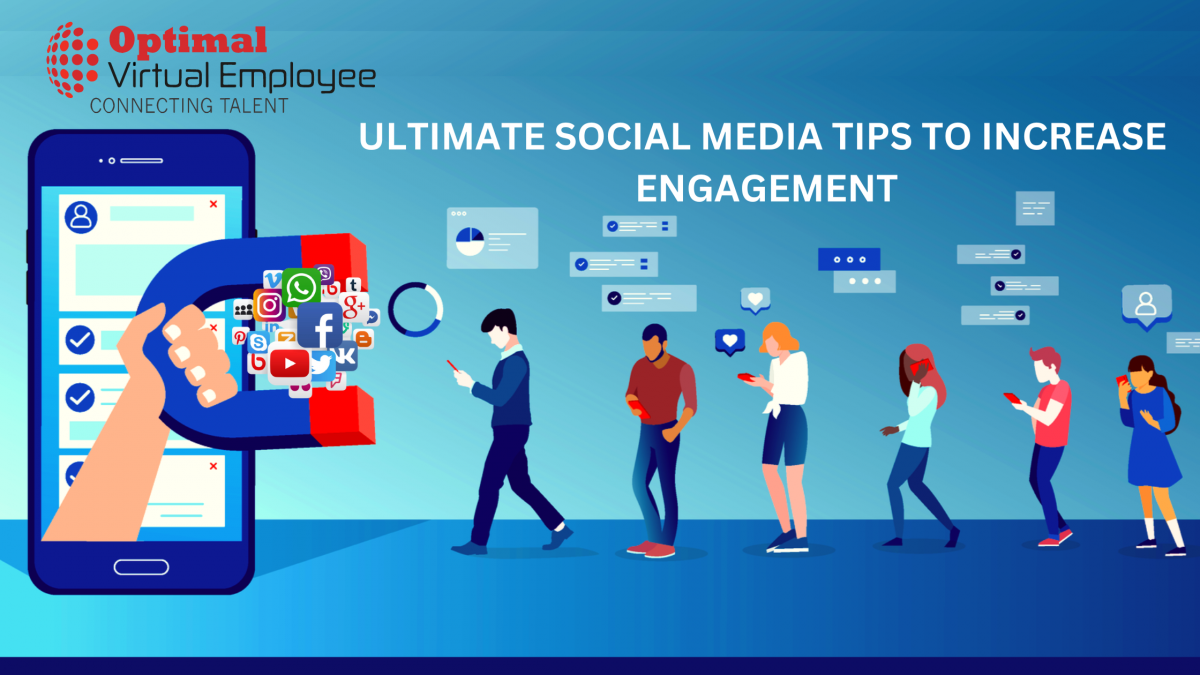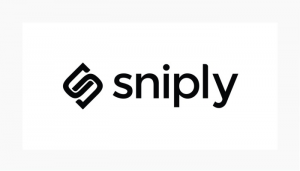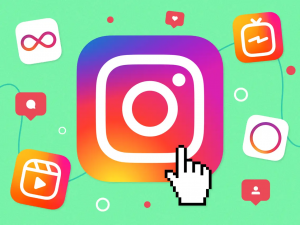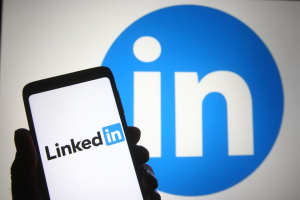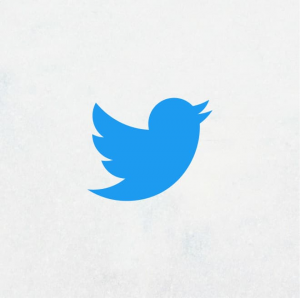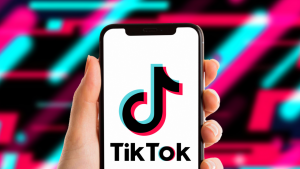Social media engagement is a significant parameter to consider when it comes to building an online store. While most businesses focus on expanding the size of their target audience, they often fail to enhance and upgrade their social media engagement too. One central aspect that businesses should keep in mind is that when you engage with your followers on social media, you can turn them into prospective customers. The time and effort you put into building relationships with your target audience can help you achieve a higher number of sales, improve customer loyalty, and have higher positive reviews.
Over half the world’s population has access to the internet, amounting to a total of 3.6 billion people in 2017 (Meeker, 2018). Companies use the web to provide enhanced experiences for their customers and streamline their offerings worldwide. The personal and collective data garnered from the web can bolster customer engagement and offer superior customer journeys, leading to increased business gains and new services. For instance, consumers can quickly use Google Maps for navigation, purchase a ride via Uber or view social posts with Snap Map , check out local news through Facebook groups, and watch live streaming of events.
Over the past decade, social media has experienced tremendous growth. Data collected by Statista shows that there were 2.46 billion users in 2017, and this number is projected to reach three billion by 2021. The leader of them all, Facebook, with its active monthly users of 2.07 billion, is followed by Instagram (800 million), LinkedIn (500 million), Twitter (330 million), Pinterest (200 million), and Snapchat (178 million). Apart from offering consumers a platform to meet their needs and desires, social media also renders interactivity for promotional activities and provides companies with market intelligence. Web 2.0 technology is the underpinning of such applications, allowing users to create content, share information, and maintain friendship-like relationships with other people they follow or are followed by. (Statista, 2018)
The proliferation of social media has spurred many companies to explore ways of connecting with their customers through these platforms. Investing heavily in social media advertising, worldwide spending on it is forecast to hit $48 billion by 2021 (Statista, 2018). Social media offer businesses numerous opportunities to engage customers and build brands – making them a valuable asset in promotional tactics. In addition, they enable customers to find and purchase products more efficiently. According to one survey, 76% of U.S. consumers have bought something they saw on a brand’s post on social media, while half said that user-generated content would make them more likely to shop through their favorite brands (Shelly, 2017).
Social media have significantly impacted customer behavior, particularly with the rise of smartphone usage. Most customers take advantage of apps through their phones to interact with other customers in various ways, such as sharing experiences, writing reviews, and expressing opinions. They can be either active partakers in the content by evaluating services, commenting and reposting material, or passively consume it by viewing what’s available and eavesdropping on conversations. Recent studies suggest that 78% of users access social media via their smartphones.
Moreover, customer service is no longer private between a customer and a customer service representative as people spend more time on mobile devices (Lella and Lipsman, 2017). A sample of 1000 customers surveyed by Sprout Social (2017) found that 46% had “called out” or complained about a business on social media, whereas 55% called out to ask for a resolution. According to the same study, 81% of respondents said that social media increased accountability for
Businesses can’t afford to ignore customers anymore. Consumers have become empowered by social media, with 80% feeling enabled to speak up against unfair treatment and 75% using it to increase their influence over vendors. Transparency is also valued highly, with 70% of customers appreciating any attempts made in this direction. Moreover, only 8% will stay silent in the face of inappropriate behavior from a brand. In the past, customers lacked the means to protect themselves against business malpractice, but social media has provided them with an avenue to voice their grievances and gather support for resolution or even compensation. Owing to its simple interface and huge user base, social media has engendered greater engagement between businesses and consumers, resulting in a massive wave of User Generated Content (UGC).
Although the significance of customer engagement has been acknowledged in the literature, there are still several gaps regarding why customers engage online with goods and services; identifying the consequences of their engagement is also of interest. The majority of available research focuses on specific aspects of customer engagement rather than on a holistic perspective.
This guide will take you through 29 unique reasons why social media engagement is important, growing your followers, improving social media engagement, and much more. Get ready to supercharge your social media strategy!
The Importance Of Getting Engagement On Your Social Media
The time you spend creating content for social media, growing your list of followers, and engaging with them is precious, even though it is free to use. In light of this, you don’t want to create a social media account and end up talking to an empty room. Or, worse yet, if you talk to a huge crowd and get ignored. If you nail your social media strategy and give people a reason to engage with you, you’ll reap plenty of benefits:
- You don’t have to be Kim Kardashian-level famous to get great engagement. You just need a great strategy aimed at the right audience.
- The conversational marketing style on social media allows your brand’s voice and thoughts to shine through. You have a great website and a good offer.
- You can exponentially increase your reach. Engaging with your social media posts can help the algorithm identify your content as more relevant and exciting, and your content will likely show up in more people’s feeds.
- Relationships need to be built. Unlike your blog, email marketing, or traditional marketing, where you talk at your audience, social media is a conversation. And when you give people a reason to engage, meaningful interactions can emerge.
- Improve customer service. Even if you aren’t handling technical support on social media, simply being there to answer questions for prospects or existing customers gives you another chance to demonstrate how much they matter (and how attentive you really are to others curious about your brand).
- Data from social engagement can tell you a lot more about your audience and help you better connect with them. You know who your audience is, but the metric you get from social engagement can tell you much more about their story.
Social Media Tools to Boost Engagement
-
Buffer
Buffer is an ideal platform for constructing and monitoring your social media presence. It provides automation services, enabling up to 10 free posts to be sent out at once – perfect for startup companies just getting off the ground. Hashtags can be inserted into the post, while tagging associated brands within Buffer is also permissible. The link-shortening feature allows more words per post, with images and visuals also included. The best part is likely its ability to track engagement on your posts with metrics such as likes, retweets, references, and clickthroughs, all visible on the dashboard.
-
Canva
Canva is a fantastic tool for utilizing social media platforms. With its easy-to-use graphic design interface, you can generate one-of-a-kind visuals tailored to each network based on the desired dimensions. It operates similarly to Photoshop and allows users to drag, drop, and alter images in any way they prefer. This capacity allows you to share appropriate content with your audience, consequently fostering social media engagement, and giving you an edge as people often credit the originator of a piece when reposting it.
- IFTTT
In IFTTT, you can automate a lot of your business. You can set triggers when you post something on Facebook so that IFTTT re-posts it on other social media accounts. When you post regularly on different social networks, you’re likely to increase your social media engagement, which is a great tool for solopreneurs who don’t have the time to craft and automate unique content for each platform.
-
Sniply
Sniply makes content curation easier because it allows you to share other people’s articles on your social media account. By adding a link back to your website, you’ll create more opportunities for visitors to find and engage with your store. Regularly posting will help you grow followers and improve engagement, which should help drive more customers to your story.
Social Media Tips to Improve Engagement
-
META {Formerly- Facebook} Social Media Tips:
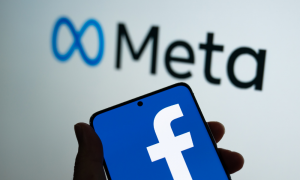
-
Experiment With Meta Ads.
You can market your business cost-effectively with Meta Ads, one of the most popular digital media marketing tools. Using Facebook and other Meta platforms for digital marketing is a great way to reach a large audience and tailor your ads to fit your target audience.
This means that choosing how you engage with Meta Ads can significantly influence how well your campaign performs. For instance, are you running traditional ads or boosting previous posts? Are you targeting general demographics or creating custom audiences?
You should monitor your experiments and test different techniques regularly if you want to develop the most effective Meta Ads.
-
Validate Your Audience.
Meta’s ability to customize and experiment makes validation a priority in social media marketing. With hundreds of unique audiences, formats, and content styles available to you, proving each component’s value reinforces your campaign’s credibility.
In reverse engineering, you can disassemble and reassemble your marketing campaign to determine the characteristics of your target audience. Where do they live? How old are they? What do they enjoy doing?
If you identify specific audiences that respond to your brand, you can save them for future content promotion or retargeting.
-
Retarget Using Custom Audience.
You ran a Meta Ad on hiking boots and presented it to a cold lead who never clicked on your link. For most marketers, that’s the end of the marketing journey.
With a retargeting ad that takes full advantage of your previous content, you can advertise to those same audience members in a matter of days. It is even possible to pre-qualify prospects before you spend a dollar on them by using video ads and retargeting only those who have watched at least 50 percent of your hiking boots video.
-
Explore Link Retargeting.
Now that you understand the power of retargeting on Meta platforms, let’s move on to link retargeting.
In case you’ve never heard of link retargeting, here’s what you need to know: Link retargeting lets you add Meta retargeting pixels to your short links whenever you share curated content. If someone clicks on your content, you can then retarget them with relevant ads.
You can retarget people who click on reviews, industry news, or media coverage related to your brand. You can do this even if the link leads to a third-party website! You can maximize your content curation and expand your retargeting ad reach while still offering genuine value by doing so.
Instagram Social Media Tips:
-
Understand The Value Of “Saves”.
It was introduced as an extension of the user experience and as an alternative to the traditional “like” feature. Users can save content to view at a later time.
I recommend finding creative ways to make repeat visits to your content worthwhile as saves become a more significant part of Instagram’s algorithm.
Travel content creators have found success with the mini-blog format on Instagram. By creating a more profound experience for users, these content creators have been able to pack more value into their posts.
-
Experiment With Content Styles.
Having excellent, high-quality pictures is great, but there are plenty of other types of content brands can use on Instagram.
A brand can choose to connect with its audience by creating engaging videos or GIFs. Everything from memes to micro-blogs can be used to increase engagement, resulting in increased exposure and growth. You should experiment with a variety of different content styles when it comes to social media tips.
-
Test Out Instagram Ads.
Your Instagram account can generate revenue through ads if you use them effectively.
You can create an ad from scratch, but the easiest way to get started with Instagram ads is to boost a post. You can make your existing post an ad by clicking on the Boost Post button. Once you choose your audience, budget, and timeline, you can set up an ad.
You can create bespoke ads using a single ad or show multiple ads at once using the carousel feature – which is perfect for e-commerce brands.
-
Collaborate With Micro-Influencers.
Micro-influencers may be one of the most undervalued resources in digital marketing.
Usually, when brands picture endorsements or brand ambassadors, they think of celebrities and industry leaders. That’s certainly a great aspiration, but the problem is that most brands lack the resources to do so.
In that case, micro-influencers are ideal. Don’t get me wrong, Instagram Ads are definitely worth it. However, there’s just no substitute for a micro-influencer with thousands of followers. This would result in a much higher quality audience with fewer ghost followers and bot accounts.
LinkedIn Social Media Tips:
-
Post Updates Regularly.
Although LinkedIn is typically considered a networking site for employees and employers, but it prioritizes user connections.
As a brand, you don’t want to disappear into the sea of business pages on LinkedIn. You need to build a relationship with your audience, which is why posting updates and content has become a priority.
Creating a connection with your audience goes beyond posting updates. Consider setting up introductions, messaging users, or publishing weekly blog posts.
-
Test LinkedIn Ads.
Paid ads are a great way to leverage the reach of social media with a targeted marketing tool.
In terms of LinkedIn ads, the rules are a bit different. For starters, LinkedIn Ads are insanely expensive. They also have low click-through rates (which can be attributed to the fact that there are fewer leads, but they’re higher quality).
Even so, the real issue is more than just budgeting. If you’re looking for a very particular audience, you can find much cheaper PPC (pay-per-click) ads elsewhere.
Determine your CPC (cost per click), reach, and conversion rate to make sure LinkedIn Ads are a good investment.
-
Avoid Hard Selling.
LinkedIn is not your friend when it comes to traditional sales language and tactics.
The only way to become an industry leader is to build relationships with your audience and sell your brand, not your product.
If your content isn’t immediately valuable or useful to them, they will scan it in less than a second. Instead of taking the typical hard-sell approach, you should prioritize honest communication with your users.
-
Create Multimedia Content.
Videos and other multimedia content perform exceptionally well on LinkedIn when handled properly. In theory, the content should explain how to solve your audience’s immediate problems.
You can also establish yourself as a thought leader by using the right content and helping users address deeper issues in your field as a brand with tons of expertise.
Make videos, infographics, or whatever content you can think of. Experiment, test, and discover what truly works.
Twitter Social Media Tips:
-
Social Listening On Twitter.
Our social media tip is to focus on social listening and determine where your brand stands on the latest relevant issues as Twitter conversations develop over time.
In addition to trying to understand your audience’s thoughts, you should also take the time to participate in the conversation in real time. The last thing you want is to be left out of meaningful conversations with your previous and current clients.
-
Develop A Clear Brand Voice.
Take the time to clarify your brand’s voice on Twitter. Authenticity and brevity are essential to your brand’s relatability.
Identify your most substantial options and start experimenting with them.
-
Run Polls.
In addition to user-generated content (UGC), polls are also a great way to increase engagement with minimal effort.
Furthermore, you can make these polls for whatever you want. You can test out different landing pages or test out different offers. The choice is yours.
-
Use Twitter Ads.
For this list of social media tips, we’re just going to talk about the value of Twitter Ads (Promoted Tweets, Promoted Accounts, and Promoted Trends).
The platform is a performance-based marketing tool, just like most social media marketing tools. One of its best features is that you can start creating specific social media ads based on what’s happening worldwide. You can’t find anything like this anywhere else, as it gives your ads an urgency and authenticity they can’t match.
Pinterest Social Media Tips:
-
Use Pinterest Ads.
If your market research shows that your audience populates Pinterest, you can create a compelling Pinterest experience for them.
Using images, making them interactive, and tweaking your Pinterest Ads for brevity will help you attract your target audience.
-
Start Using Rich Pins.
Rich Pins are essentially a way for users to collect more Pins without thinking about it. You can create content tailored to your specific audience and continue to develop that relationship.
There are a few different types of Rich Pins:
- Product Pins: includes real-time pricing and availability
- Recipe Pins: lists ingredients, cooking times, and even serving sizes
- Article Rich Pin: focuses on the Pin’s author
-
Optimize For Mobile.
As Pinterest is heavily mobile-friendly, you can make a few safe assumptions about the user experience. For one, it’s unlikely users will use desktop computers to check the content.
The best way to optimize for mobile is to set up vertical images in a rectangular shape. The images should have a 2:3 ratio to fit the mobile screen, and your Pinterest account is ready to go.
-
Focus On Keywords.
If you consider how easy it is to look up just about anything on Pinterest, it’s no surprise that it’s become an effective search engine.
Last but not least, when you’re on this social media platform, make sure you focus on the keyword viability of the words you’re using.
Youtube Social Media Tips:
-
Focus On Promotion.
Freshness is a factor that YouTube considers as part of its overall algorithm, so you want to maximize that initial boost.
Planning is the key to doing that.
You might think you need to upload your videos as soon as they are ready to maintain a steady content cadence. Yes, that cadence is crucial.
It’s equally important to set up your videos for success. Make sure you have everything set up before your video goes up, whether it’s social media posts, email marketing, or anything else.
Your video and promotion blitz should be launched within the same 24 hours.
-
Respond To Comments With Questions.
YouTube comment sections are known for producing nothing good.
It all depends on how you use them.
You can build a great engagement with your community even if not all comments are created equal. Responding to comments in a way that uses questions is one way to do so. For example, if someone says the video was helpful, ask them what they liked about it. Ask for suggestions, & for improvements if you receive constructive criticism.
You can help users with their needs in the comments section while potentially attracting other users.
The more followers feel they are watching a transparent and responsive content creator, the more invested they become in that content.
-
Post Both Long And Short Videos.
If you want to grow your YouTube following, you need content that stands out.
Effective long-form content is one of the best ways to get there quickly.
You don’t need to start with an hour-long video to get there, and you shouldn’t add fluff. Creating comprehensive videos on topics relevant to your audience won’t scare them off. If you make the content useful and well-organized, it won’t.
While it may have blown up through content such as TikTok and Instagram Reels, YouTube is investing heavily in the short-form videos through YouTube Shorts.
Do not assume short-form success is simply shrinking your long-form videos. Different audiences prefer each type for different reasons. Develop a strategy for both, and watch your channel grow.
-
Prioritizing Optimizing Thumbnails.
Your thumbnail is going to be the first thing a potential viewer sees on YouTube.
Consequently, you need to invest in thumbnails that will attract viewers to your videos.
To start, follow YouTube’s basic guidelines, which are as follows:
- The thumbnail size should be 1280 pixels by 720 pixels.
- A 16:9 aspect ratio should be used.
- Make sure the thumbnail is at least 640 pixels wide.
- Make sure the image doesn’t exceed 2MB in size.
- Use JPG, GIF, or PNG formats
You can do more than these basic things:
- Your thumbnail should be readable.
- Using white space and text large enough to read ensures your message isn’t lost.
- Test YT thumbnails to find the best fit for your brand, but once you find it, create consistent thumbnails.
TikTok Social Media Tips:
-
Take Advantage of Trends
You don’t see dance moves much anymore, do you? That’s because those trends have died, and new ones have taken their place.
Regardless of your industry, make sure you create TikToks that leverage the current trends. This is because the algorithm will push out the most popular content. If users want more memes, you need to make them.
Therefore, you must engage with TikTok continuously. If you watch a lot of content in your industry, the For You Page will soon show you precisely the latest trends. That’s the only way you can see for yourself which trends are popular and which ones can be used for your brand.
Make sure to include hashtags associated with your trend in your videos. Otherwise, users will not be able to see your trending videos. Plus, the more hashtags you use, the more TikTok will feature your videos.
-
Keep your content short and sweet
.On TikTok, how many long videos do you watch? Probably none if you’re being honest. That’s because shorter, snappier videos make better content.
There are several reasons for this, including TikTok’s target audience. Many Gen Z users on TikTok are extremely hard to please regarding video content. The first few seconds of the video are all you have to win them over, so you have to get started immediately. YouTube is a great place to create longer videos.
Also, the algorithm rewards you when users watch all or most of your videos. The shorter your videos, the more likely users will watch them all.
It can pay off big time to work with these TikTok influencers if they exist in your industry. Not only do these influencers produce great content on TikTok, but they also have a lot of influence over young people. It can be a powerful way to promote your TikTok account and increase brand awareness (and possibly sales).
It can always be challenging if you’re working with an influencer or creator for the first time, but TikTok’s Creator Marketplace makes it easy. A brand can use the marketplace to find influencers appropriate for their channel and audience, manage its campaign, make payments, and analyze its impact.
Though there is no guarantee of success, the Marketplace can make creating your first influencer campaign much more accessible.
-
Use Influencers in Your Campaigns
It’s not just Twitter and Instagram that use hashtags to help users find content. TikTok displays a list of videos sorted by hashtags when users click the Discover icon at the bottom of the screen.
The best way to use hashtags on TikTok is to find trending content, but you can also use hashtags in your videos to boost your reach and gain more followers.
You should avoid using dozens of broad, generic hashtags and focus on being specific. As a result, your videos will appear in less popular trending categories, which is much better than not appearing at all for the most popular hashtags at all.
-
Be yourself and have fun
TikTok isn’t the place to pretend to be someone or something you aren’t. Rather than relying on high production values like Instagram and YouTube, you should stick up quick videos you’ve taken on your smartphone. It’s all about authenticity.
Don’t take things too seriously. People come to TikTok to be entertained, not sold to. Keep it light and fun.
How To Increase Your Social Media Engagement?
- Post engaging content
To enhance social media engagement, generate content that can spark discussion. It could be a poll on Twitter, a video that resonates with your followers, an image with people in stitches, or product photography that will get people tagging their friends. Select posts that can evoke positive reactions from your audience, whether it is stunning visuals, something relatable or even humorous. When managing a brand presence online, it may be best to steer clear of controversial topics and situations which might leave viewers with ill feelings toward the company.
- Reply to all comments.
If you want your customers to engage with you on social media, you have to be social too. Whenever a customer sends you a message or comments on a post, they give you a chance to talk to them. Whether you receive a positive or negative message, you should respond to each one. You can appreciate positive messages and suggest a resolution for negative ones. As you’re not directly engaging with someone when they tag their friends, you won’t respond to a post if they tag their friend.
- Engage readers by encouraging them to comment, like, and share.
Always include a call to action at the end of your posts. You can ask people to like, comment, and share. People are more likely to share a post if it asks them to.
- Create a Facebook group.
Facebook groups are a great way to enhance engagement with your social networks. They tend to be more sociable than pages, as members can post their questions anytime. Having a group can facilitate discussion amongst your customers and help them get to know each other better. Your role should include the moderation of content; this is essential in beating off spam and making the group worthwhile for its community. Keeping an active presence while fortifying relationships with everyone involved is also wise.
- Hold contests and giveaways.
The easiest way to increase social media engagement is to run contests and giveaways. Ask people to visit a landing page on your website (that you can retarget) to enter. As contest requirements, you can use tools like Rafflecopter to increase social media engagement and grow your social media following. Your business can expense the prize, but you’ll need to give it to the winner.
- Every post should include an image.
According to Buffer, tweets that include images tend to gain 150% more retweets than tweets that don’t include them. If you add relevant images to your post, you will encourage more social media engagement. Images capture more attention when scrolling through newsfeeds than plain text.
- Gain more followers
It is important to have followers on social media to increase engagement. Brands with fewer than 100 followers receive less engagement than brands with thousands. Social engagement can be a numbers game. Your posts will receive a higher level of engagement if you have a bigger audience. Although you should still ensure your social media posts are of high quality, it’s much easier to get post engagement if you have a large audience.
- Ask questions
When you post on social media, a great way to engage your fans is to ask a question. Asking a relevant but fun question is a great way to get your customers to leave a comment on your post. To incorporate your product into the question but still be playful with your audience, you can create a post that compares two different dresses and asks, ‘Which dress do you prefer for date night?’
- Post multiple times a day.
Regular postings to your social media pages will help you build a more engaged audience. On average, 2-3 posts per platform per day will help you build an engaged audience. You may annoy your audience if you post too much, resulting in unfollowers. On most social networks, posting between 1-3 pm is the best time to post.
- Optimize your headlines for engagement.
You need an honest and captivating headline to drive traffic to your blog post or the product page. Use CoSchedule to create a captivating headline. Using CoSchedule, you can optimize your headlines for click-throughs and engagement. You’ll get a score for your headline and can make changes to improve it. Aim for a score above 70.
- Share relevant content with your audience.
You need to figure out who your customers are, what they like, and how they consume information. Would they like videos, blog posts, or images? You will probably need to experiment with different types of content to see what gets the most engagement. If videos perform well on your fan pages, make more of them.
- Posts Should Begin with Two Attention-Grabbing Words
I experimented a lot when I first started managing social media pages. For example, if I were running a giveaway or contest, I would write: ‘GIVEAWAY ALERT:’ or ‘CONTEST ALERT’ if I capitalized two important words before a post.
- Engage in interactions that go above and beyond.
Occasionally, Netflix interacts with fans on social media to boost engagement. For example, on their Canada Day post, all of their responses to their fans made Canadian references, such as using the word eh. Each customer response was different. If you regularly offer a fun and enjoyable customer experience on your pages, you’ll increase social media engagement. Don’t do canned responses.
- Host a weekly Twitter chat.
The weekly Twitter chats are a real-time way to interact with your customers. Create a hashtag for your chat and let your audience know about it. They serve as another way to increase social media engagement. To entice more participation, many Twitter chats include giveaways in exchange for answering questions. In the event that a high number of tweets are made using the hashtag during a particular period, the hashtag can trend.
- Emojis are a great way to communicate.
The use of emoticons on social media can increase engagement, according to OPUSFidelis. Each emoticon can increase engagement differently. For example, a smiley face can increase engagement by 25%, while a grimacing emoticon increases engagement by 138%. Those who use emoticons in their social media posts tend to see an increase in likes, comments, and shares.
Conclusion
If you are struggling with elevating your marketing campaigns and need some social media tips, don’t worry. You are not alone. Take advantage of Instagram’s diverse content formats and build unique content when using Meta (formerly Facebook).
Engage in conversations with other LinkedIn users and use LinkedIn to build relationships. If you want mobile ads to experience focusing on keywords, you should use Twitter. If you want to reach a younger audience or connect with your users on a deeper level, try TikTok.
You’re one step closer to digital marketing mastery by listening to these social media tips, taking control of your marketing campaign, and thinking critically about what works and doesn’t.
